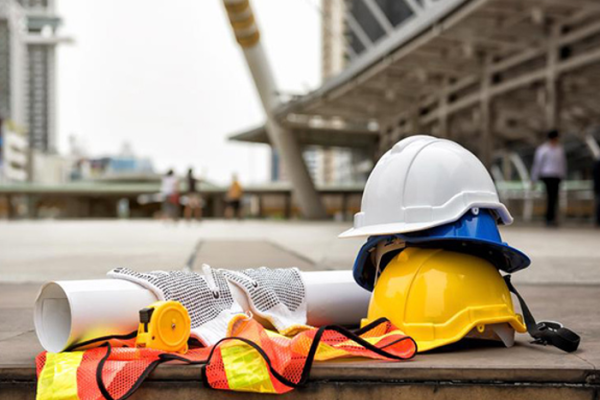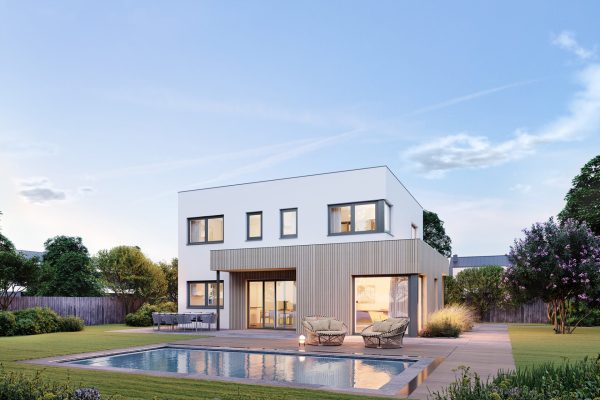Did you know that the global visualization and 3D rendering software industry was valued at $2.95 billion?
Building a structure is a complex process that has traditionally been done through trial and error. The construction industry has long been plagued by inefficiencies, with projects often taking longer than expected and going over budget.
3D rendering offers several benefits to the construction industry, including improved communication, increased accuracy, and reduced costs. But that’s not all! Keep reading to find out all of the benefits of 3D rendering in the construction industry!
What Is 3D Modeling?
3D modeling is the process of creating a 3D representation of an object, space, or building from a set of digital data points. This data can be used to create realistic-looking images and animations that can be manipulated in various ways.
The different modeling programs let you manipulate textures, materials, and light to create a highly detailed image or 3D model. This allows you to better visualize the end product before any construction begins on site.
Go here for Architectural Rendering Services.
How Does 3D Modeling Work?
3D modeling requires a digital simulation environment with most of the design elements that would otherwise be present in any physical environment. To create a 3D model, you’ll need to first collect data about the object or space you’re looking to render. This could include measurements, materials, textures, and lighting conditions.
Then, the designer will use this data to create a 3D model of the object or space using specialized software. The model is then rendered with realistic lighting and textures, creating a highly detailed image.
Different Types of 3D Modeling
Now that we’ve established what 3D modeling is, let’s look at the various types of 3D models available. They include:
Geometric Modeling
Geometric modeling is a type of computer-generated image that uses data points and mathematics to create a three-dimensional representation of an object. This type of modeling is often used in product design, architecture, and engineering.
Geometric modeling can be used to create an accurate representation of an existing object or to design a new object from scratch. In either case, the process begins with the creation of a wireframe model. This wireframe is then fleshed out with surface details, textures, and colors.
The final step is to add lighting and shading effects to create a realistic image. Geometric modeling is a powerful tool that can be used to create realistic images of objects that do not exist in the real world.
Motion Graphics
Motion graphics can be used to create a wide variety of visual effects. For example, they can be used to create animations or to add interactivity to websites and video games. Motion graphics are often used to create dynamic and attention-grabbing visuals.
By manipulating models in real-time, motion graphics designers can produce a wide range of visual effects. This makes motion graphics an essential tool for any designer who wants to create truly impressive visuals.
Realistic Rendering
Realistic rendering is a technique used to create ultra-realistic images and videos from a 3D model. This level of detail is often used in films, advertising, and product design. Realistic rendering uses advanced techniques such as ray tracing to create images that look as realistic as possible.
Ray tracing is a technique that follows the path of light rays as they bounce off objects in a scene. This allows for the accurate depiction of complex lighting effects like reflections and refractions. As a result, realistic rendering can create images that are virtually indistinguishable from real life.
While the level of detail achievable with realistic rendering is impressive, it comes at a significant computational cost. For this reason, realistic rendering is often used sparingly in films and other graphics-heavy applications. However, when used judiciously, realistic rendering can help to create stunning visuals that bring worlds to life.
The Benefits of 3D Rendering in Construction
3D rendering in construction offers numerous benefits over traditional methods. Here are some of the ways 3D rendering can benefit construction projects:
Reduced Risk
The construction industry has long relied on two-dimensional (2D) drawings to plan and build structures. However, the advent of powerful 3D modeling software has allowed architects and engineers to create more accurate and detailed models of their projects.
These models can be used to identify potential design flaws or structural issues that may arise during construction. As a result, using 3D models can help to reduce the risk of costly mistakes and delays.
In addition, the use of 3D models can also help to improve communication between different members of the construction team. By being able to visualize the project in three dimensions, everyone involved can get a better understanding of the work that needs to be done.
As a result, the use of 3D modeling is becoming increasingly popular in the construction industry.
Improved Efficiency
Any architect will tell you that the design of a space or building is crucial to its function and efficiency. Unfortunately, not all designs are created equal. Traditional 2D drawings can make it difficult to visualize how a space will look and function.
This can lead to expensive re-designs during the construction process, as well as costly delays. 3D modeling helps to avoid these problems by providing a more accurate representation of the finished product.
This allows for better planning and coordination between different teams, resulting in a smoother and more efficient construction process. In other words, 3D modeling is not just a helpful tool it’s an essential part of creating spaces that work well and function efficiently.
Enhanced Visualization
The power of visualization is well-known in the world of architecture, design, and construction. Being able to see a project before it’s built can help to ensure that everything comes together as planned. 3D models provide an enhanced visual experience that can help professionals in these industries to better understand the project.
This can help them to make informed decisions and see the end product before any physical construction has taken place. With the use of 3D models, potential problems can be identified and addressed early on, saving time and money in the long run.
In today’s competitive marketplace, the ability to offer this kind of visualization is a major advantage. As more and more companies adopt this technology, those who don’t will be at a distinct disadvantage.
Improved Communication
Communication is essential in any project, but it is especially important in construction. Poor communication can lead to errors, delays, and even accidents. 3D modeling can help to improve communication between all parties involved in a construction project.
By allowing everyone to visualize the design process in a more detailed way, 3D modeling helps to ensure that everyone is on the same page throughout the build process. In addition, 3D models can be used to create simulations of the construction process.
These simulations can help to identify potential problems and find solutions before work begins on the site. As a result, improved communication is one of the many benefits of using 3D modeling in construction.
Increased Productivity
Productivity is important for any business as it directly impacts the bottom line. The use of 3D modeling can help to increase productivity in several ways. First, it allows designers to quickly create and test prototypes.
This can save a significant amount of time compared to traditional methods such as hand-drawn sketches or cardboard models. Additionally, the use of CAD software enables designers to make changes to their designs more quickly and easily.
As a result, businesses that utilize 3D modeling can bring new products to market faster and with less wasted effort. In today’s competitive marketplace, enhanced productivity can be the difference between success and failure.
Cost Savings
As anyone who has ever tackled a home improvement project can attest, even the most well-planned endeavor can quickly go off the rails if unforeseen issues arise. Materials get damaged, costs begin to spiral upward, and tempers start to fray.
However, by using 3D modeling during the planning stages of a project, it is possible to identify potential problems before they occur. This helps to reduce waste, keep costs under control, and ensure that the finished product meets all of the requirements.
In addition, 3D models can be a valuable tool for communicating ideas and ensuring that all members of the team are on the same page. By taking advantage of all that 3D modeling has to offer, it is possible to complete projects on time and within budget.
Faster Turnaround Time
Speed is essential in the world of construction. If a contractor can’t complete a job on time, they risk losing money and damaging their reputation. That’s why many construction companies are turning to 3D models to help them speed up the design process.
With specialized software, contractors can quickly create accurate models of their proposed buildings. These models can then be used to spot potential problems or make changes before construction even begins.
As a result, using a 3D model can save considerable time and money by preventing delays and having to redo work. Whether you’re building a new home or adding an extension to an existing one, using a 3D model can help you get the job done faster.
Greater Machine Control
As anyone who has ever dealt with automated machinery knows, one of the biggest challenges is getting the machine to accurately reproduce a desired shape or design. This often requires numerous expensive and time-consuming trial-and-error runs.
However, 3D models can be used to create a virtual version of the desired shape or design, which can then be used to control the automated machinery. This allows the machine to quickly and accurately build the structure or component, saving time and money.
In addition, it can also help to prevent errors that could cause damage or delays. As a result, 3D modeling is an increasingly popular tool for those who need to control automated machinery.
Promotes Team Synergy
Designing in three dimensions helps promote team synergy and understanding among everyone involved in a project. With a three-dimensional model, it is easier to see how each component fits together with the rest of the design.
This can help prevent misunderstandings and errors, as everyone on the team will be working from the same reference point. In addition, seeing the design in three dimensions can also help to identify potential problems or areas of improvement that might not be immediately apparent in a two-dimensional drawing.
As a result, 3D models can play an important role in promoting collaboration and teamwork.
Enables Share-Friendly, Easy-to-Review Designs
The ability to easily share and review 3D models is a huge advantage for any project. No longer do stakeholders have to rely on 2D drawings that can be difficult to interpret. With 3D models, everyone can get a clear understanding of the design and make changes as needed.
This helps to save time and get projects completed faster. Additionally, 3D models can be reviewed online or in person, making it easy for all interested parties to stay involved in the process. ultimately, 3D modeling enables more efficient and effective collaboration, which leads to better results.
Want More 3D Rendering Tips?
As you can see, the benefits of 3D rendering technology in the construction industry are vast. From reducing project costs to increasing accuracy and efficiency, 3D rendering is changing the way we build. Are you using 3D rendering in your construction projects? If not, what’s holding you back?
To learn more, check out our blog for more articles just like this!





